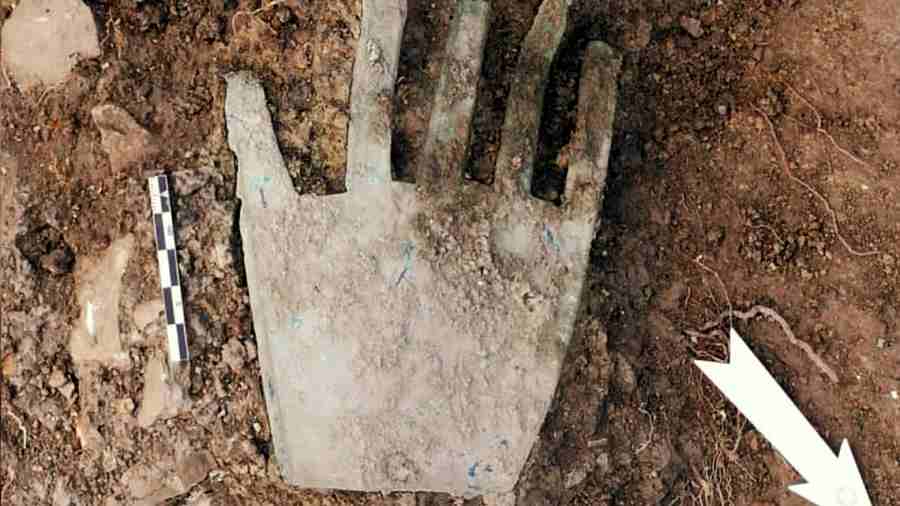Sat 11 May 2024:
A fascinating discovery unravelled the varied layers of ancient history as researchers unearthed a bronze hand dating back 2,000 years in the northern region of Spain, media reports said. Covered in cryptic symbols, this relic from the Iron Age has sparked intrigue among researchers. The study published in Antiquity proposed a groundbreaking connection between the mysterious inscriptions and ancient Paleohispanic languages. Thus, it suggested a possible link of the inscription to the development of the modern Basque language in Spain.
The hand is also believed to be crafted by the Vascones tribe in the region. This intriguing study is now challenging previous assumptions about the status of a pre-literate society that did not develop the use of writing at the time.

The ancient Iberians (people who settled in the Iberian peninsula’s eastern and southern coasts from the 6th century BC) were known for gruesome practices like severing captives’ right hands. However, this artefact’s symbolism is now potentially hinting at the ritualistic or cultural significance of what is found in the region.
Experts, involved in the study, deciphered the text using linguistic analysis. They reportedly identified parallels with Basque vocabulary. “The text inscribed on this artefact, which was found at the entrance of a domestic building, is interpreted as apotropaic, a token entreating good fortune,” according to the researchers.
Moreover, the hand’s positioning near a building entrance and the sgraffito technique (a decor method involving layers) used for inscription provide valuable clues about its purpose and context. There were careless strokes and variations in letter size.
“The new inscription presented here provides support for a growing awareness that the ancient Vascones knew and made use of writing, at least to a degree,” the researchers added.
The letters, as per the researchers, would have made use of the sgraffito technique to create the lines seen on the hand. Along with the strange line patterns, there were also large punched dots.
However, the study could not confirm which instrument was employed to write the so-called text. They believe it could be a sharp iron tool like a burin, a handheld tool used for engravings.
SOURCE: INDEPENDENT PRESS AND NEWS AGENCIES
______________________________________________________________
FOLLOW INDEPENDENT PRESS:
WhatsApp CHANNEL
https://whatsapp.com/channel/0029VaAtNxX8fewmiFmN7N22
![]()
TWITTER (CLICK HERE)
https://twitter.com/IpIndependent
FACEBOOK (CLICK HERE)
https://web.facebook.com/ipindependent
YOUTUBE (CLICK HERE)
https://www.youtube.com/@ipindependent
Think your friends would be interested? Share this story!





